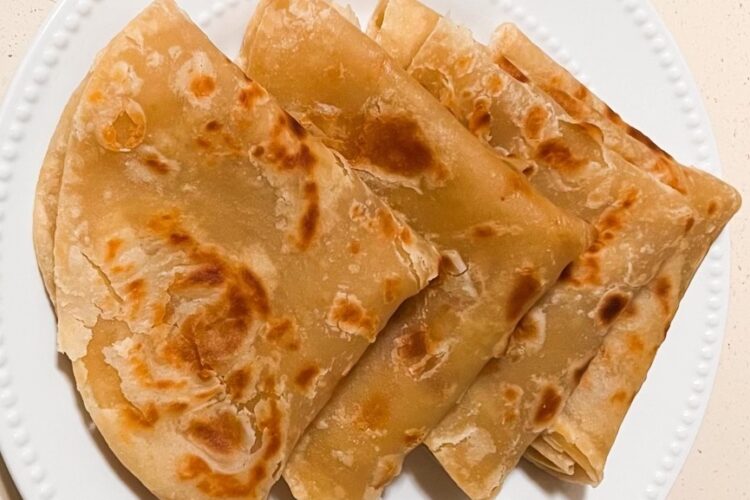This post may contain affiliate links, which means I may receive a commission from purchases made through the links.
Every culture has dishes that are deeply tied to it and that people of that culture identify with as ‘their’ dishes. Often, these dishes have particular recipes that are not to be modified, including the tools and equipment that are used in their preparation. This is the case of chapati in East Africa, and especially in Kenya where I come from. In this article, we will talk about the challenges of making such cultural dishes while abroad and we will specifically talk about how to make chapati in America.
Making Chapati is a big deal in Kenya
In Kenya, there is a special pan that is used to make chapati. That pan is hardly ever used to cook anything else and on the other hand, if you were to be found cooking chapati on any other pan other than that specific one, you will be asked questions. Along with the pan is a small charcoal stove, known as ‘jiko,’ which is usually the preferred stove for chapati cooking as opposed, for instance, to a gas or electric stove. So, what do you do if you are a Kenyan living abroad such as in the United States, and you want to make some chapati?
Where did Chapati originate from?
Although the origin of chapati can be traced back to India, historical happenings brought it to East Africa, and it has since been fiercely embraced by East Africans. It is a dish that is loved not only throughout the Swahili Coast but also inland in Kenya, Tanzania, Uganda, and beyond. Chapati is part of the daily diet in these countries. Thanks to its versatility, it is a popular street food, but it is also a very much respected dish that is served on special occasions such as weddings across East Africa.
For such reasons, the preparation of chapati is a sensitive matter to many East Africans. One is excessively praised if they are good at it, and laughed at (whether directly or behind their backs) if they are not. As such, those who can make great chapati are often extremely proud of themselves while those who cannot will openly admit, “I am not good at making chapati.” The latter do this to avoid harsh judgment later should their chapati turn out to be a disappointment. So, if there is so much stress around the making of chapati while back home, can you imagine trying that while living abroad?
Making authentic cultural dishes away from home
Making authentic cultural dishes can prove particularly difficult when you are living away from home. Your access to the necessary tools, equipment, and ingredients for such a dish may be limited. And, as I mentioned earlier, when it comes to making such dishes which are part of one’s cultural identity, things can get quite sensitive. You probably have seen someone call another out for making a dish ‘the wrong way.’ Many of us usually feel that these cultural dishes should be made in a certain specific way that is already well established. No modifications.
Think of pies in American culture, ugali in East Africa, jollof rice or fufu in West Africa, sushi in some Asian countries, or tacos or empanadas in some Latin American countries. If someone from these countries was to see you messing around with a recipe for their cultural dish, they would most likely be unhappy with you. At least I’ve seen Kenyans call people out for making ugali in ‘unapproved’ ways such as by adding salt to it or by making it with some sophisticated kitchen equipment that is normally not part of the deal. According to them, there is only one way to make ugali, and that is by using a regular cooking pot and a wooden spatula. The same reasoning applies to making chapati among East Africans.
Making Chapati away from home
I have heard fellow East Africans complain that chapati in the US just doesn’t come out as nicely as the chapati back home. I have also heard stories of people bringing over the heavy chapati pan that I mentioned earlier all the way from home because they are convinced that it is the only one that makes great chapati and that without that specific pan, chapati simply can’t happen. While I can neither confirm nor deny these viewpoints, I can say for sure that we, as East Africans, cannot afford to bring over all the tools we use back home to make chapati. I wouldn’t be surprised though if someone already succeeded in bringing over the charcoal jiko. Anyway, I am just here to assure you that you can make great chapati here in the US even without the authentic tools from back home.
How do I cook Chapati in America?
Start by assembling the necessary equipment. As long as you can get your hands on a heavy, non-stick frying pan and a rolling pin, you are all set. As for the rest, your kitchen has them. The kitchen counter offers a perfect working surface (in place of the ‘chapati table’) and yes, you will make your chapati on the regular gas/electric stove. All you’ll need to do is to regulate the heat as you cook. That is how I make chapati here in the US and to tell you the truth, it comes out perfect! I don’t mean to brag, but I am one of those people who have been told that their chapati is great! Let’s now talk about flour selection for the perfect chapati.
Which is the best brand of Chapati flour in America?
Any brand of all-purpose wheat flour can be used to make chapati. I like to use Gold Medal unbleached all-purpose flour because I find that it gives soft (or rather non-chewy) chapati. Besides, unbleached flour is known to be great for dense bread while bleached flour is best for lighter items such as cakes. Note that bleached flour can still serve the purpose anyway. You can also use whole wheat flour for more wholesome chapati.
Where can I find Chapati flour in America?
You can buy all-purpose flour from any grocery store in the US. Usually available in the ‘baking needs’ aisle alongside many other types of flour. I buy mine at Meijer, Walmart, or Kroger. If you are looking for some homeland brands, then try checking out your local stores that sell African foodstuff. These can be African stores or world markets which also often sell Indian, Arabic, or Caribbean foodstuff.
Where is the best recipe for soft and delicious Chapati?
The recipe for soft, layered, and delicious chapati is this one. In this recipe, I outline the details of ingredient measurement, step-by-step instructions, as well as additional tips that would help you make the best chapati ever.
What do I serve with Chapati in America?
My recipe for soft, layered, and delicious chapati also includes several serving suggestions, both vegetarian and meatatarian. Please check it out and have fun trying out different combinations.
Conclusion
When living abroad or anywhere far away from home, any opportunity to enjoy a meal that is part of your cultural identity is a special opportunity. Being able to make such dishes while away from home matters a lot to most of us because it makes you feel closer to home. For someone who is relatively new abroad, it can actually reduce chances of homesickness! I hope that chapati lovers who read this find the inspiration and guidance they need to make chapati wherever they live. Do not wait until you travel to a ‘chapati country’ to enjoy this popular delicacy.






